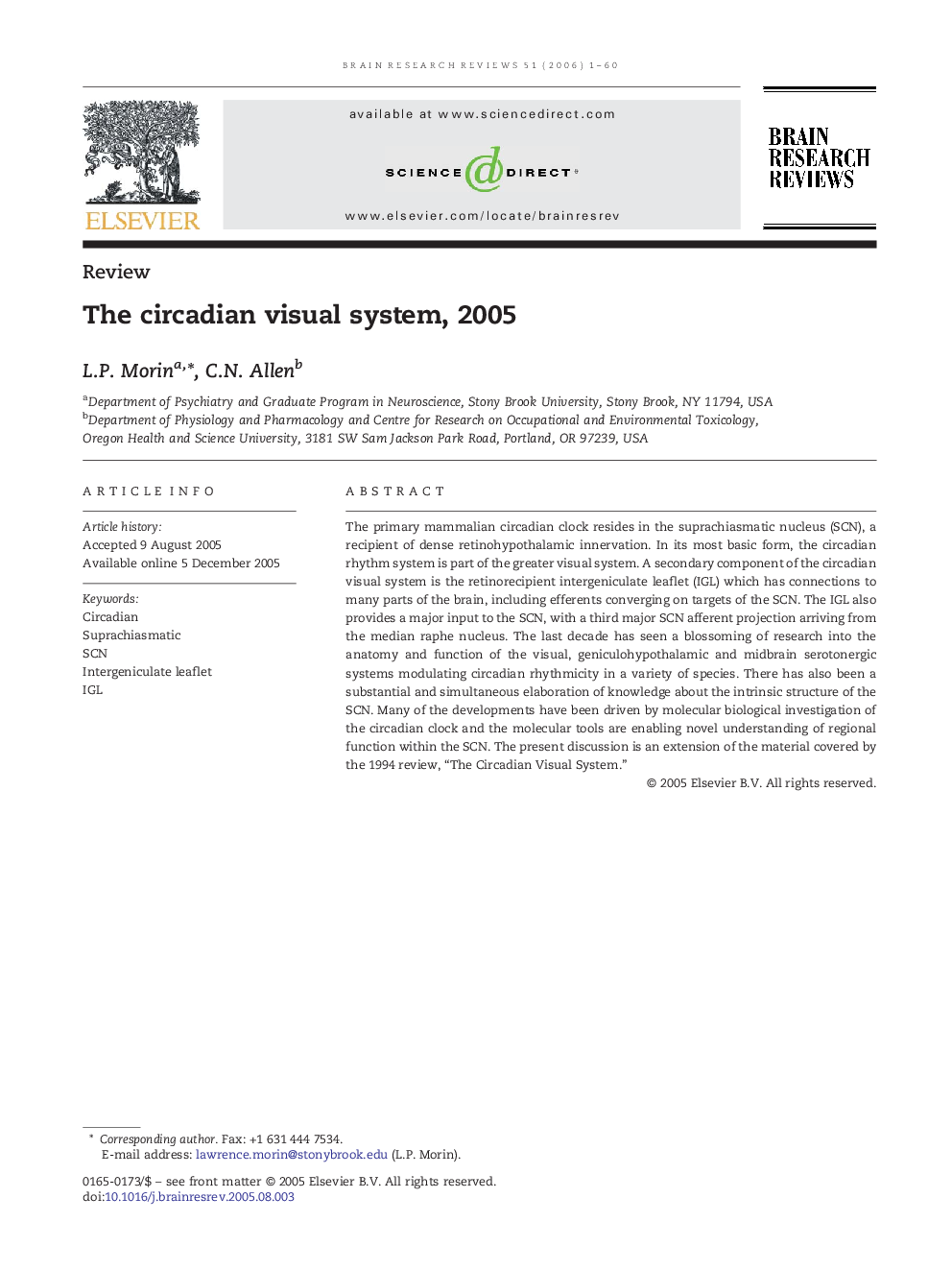| Article ID | Journal | Published Year | Pages | File Type |
|---|---|---|---|---|
| 4333900 | Brain Research Reviews | 2006 | 60 Pages |
The primary mammalian circadian clock resides in the suprachiasmatic nucleus (SCN), a recipient of dense retinohypothalamic innervation. In its most basic form, the circadian rhythm system is part of the greater visual system. A secondary component of the circadian visual system is the retinorecipient intergeniculate leaflet (IGL) which has connections to many parts of the brain, including efferents converging on targets of the SCN. The IGL also provides a major input to the SCN, with a third major SCN afferent projection arriving from the median raphe nucleus. The last decade has seen a blossoming of research into the anatomy and function of the visual, geniculohypothalamic and midbrain serotonergic systems modulating circadian rhythmicity in a variety of species. There has also been a substantial and simultaneous elaboration of knowledge about the intrinsic structure of the SCN. Many of the developments have been driven by molecular biological investigation of the circadian clock and the molecular tools are enabling novel understanding of regional function within the SCN. The present discussion is an extension of the material covered by the 1994 review, “The Circadian Visual System.”
